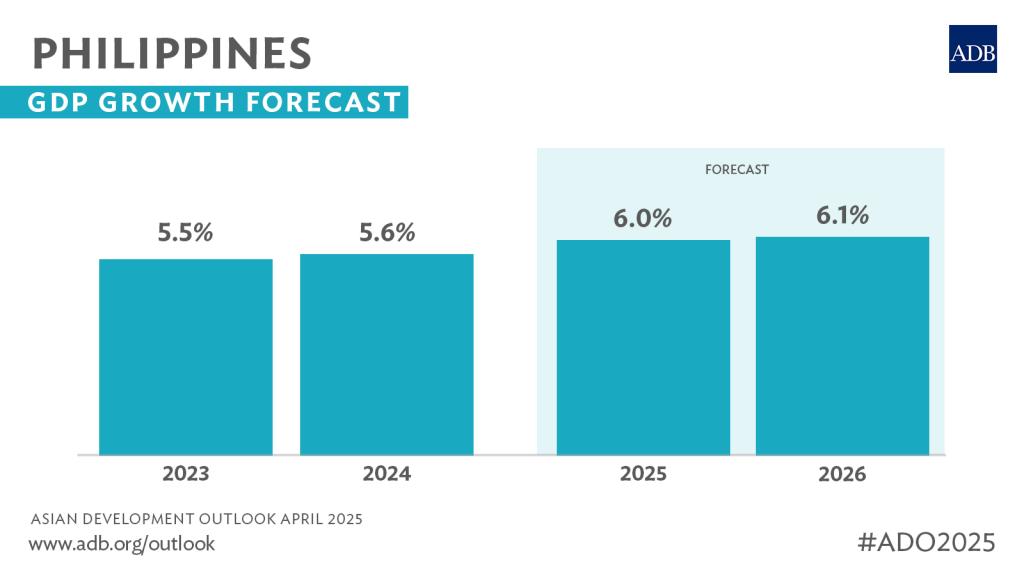The Asian Development Bank (ADB) projects the Philippine economy to grow by 6.0% in 2025 and 6.1% in 2026, up from a 5.6% expansion in 2024, reaffirming the country’s position as one of Southeast Asia’s fastest-growing economies.
In its flagship Asian Development Outlook (ADO) April 2025 report, ADB attributes this positive outlook to strong domestic demand, sustained investment in social services and critical infrastructure, and manageable inflation.
“These solid fundamentals—private consumption, infrastructure investments, and government support for key sectors—will continue to drive growth in the Philippines,” said ADB Country Director for the Philippines, Pavit Ramachandran.
Domestic Drivers of Growth
ADB highlights several key factors fueling the country’s economic momentum:
- Stable inflation, forecast to average 3.0% in both 2025 and 2026, remains within the government’s 2.0%–4.0% target range. This reflects easing prices of global commodities, particularly oil, and a decline in rice inflation.
- Improving employment, with the unemployment rate dropping to 4.3% in January 2025 from 4.5% the year before, creating 2.6 million new jobs.
- Higher household income, supported by wage hikes across several regions, continued overseas remittance inflows, and election-related spending ahead of the May 2025 midterm elections.
- Relaxation of foreign ownership restrictions in key sectors—renewable energy, telecommunications, shipping, railways, and expressways—is also expected to attract new investments and create more employment opportunities. Complementary labor market reforms and skills development programs aim to improve workforce readiness.
Boost in Public Spending
The government has increased its 2025 national budget by 9.7%, with roughly one-third allocated to social services. These include education, healthcare, livelihood and training programs, and expanded support for low-income families through conditional cash transfers and food voucher initiatives.
ADB is actively supporting the Pantawid Pamilyang Pilipino Program and helping prepare financing for the Walang Gutom (Zero Hunger) Food Voucher Program.
Infrastructure as a Growth Catalyst
The Philippines aims to sustain infrastructure spending at 5.0%–6.0% of GDP over the medium term, with an average of 5.8% recorded from 2022 to 2024. To ensure efficient project delivery, a dedicated project management office has been set up to oversee major transport initiatives.
Flagship infrastructure projects include:
- The Malolos–Clark Railway Project
- The South Commuter Railway Project, linking Metro Manila with northern and southern Luzon
- The Bataan–Cavite Interlink Bridge, is poised to become one of the world’s longest bridges
Global Risks and External Challenges
While the outlook remains strong, ADB cautions that heightened global trade uncertainty—especially following the April 2 announcement of new U.S. tariffs—could impact market sentiment and investment decisions. These new tariffs were not factored into the baseline projections but are analyzed in the report’s scenario assessments.
In addition to trade risks, the report notes that geopolitical tensions and climate-related disruptions could pose further challenges to regional stability and economic resilience.




